MARIANI’S
August
1,
2010
NEWSLETTER
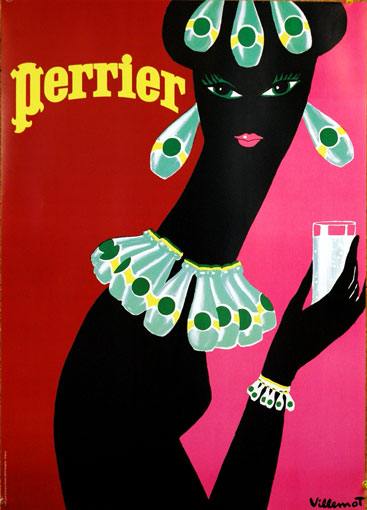
Perrier
Poster by Bernard Villemot (1977)
~~~~~~~~~~~~~~~~~~~~~~~~~~~~~~~~~~~~~~~~~~~~~~~~~~~~~~~
➔ QUESTIONS? TO REACH JOHN MARIANI
WRITE
TO: newsletter@johnmariani.com.
➔ ARCHIVE: Readers
may now access
an
Archive of all past newsletters--each annotated--dating back to July,
2003, by simply clicking on www.johnmariani.com/archive
➔ SUBSCRIBE AND
UN-SUBSCRIBE: You may subscribe anyone you wish
to this newsletter--free of charge--by
clicking here.
GOOD
NEWS! Esquire.com now
has
a
new
food
section
called
"Eat
Like
a
Man,"
which
will
be
featuring
restaurant
articles
by
John
Mariani
and
others
from
around
the
USA.
THIS WEEK: The
Ignorant
American's
Guide
to
Eating
Better
Chinese
Food
~~~~~~~~~~~~~
☛ In
This Issue
BARCELONA AND BILBAO GET BETTER AND BETTER by Misha Mariani
NEW YORK CORNER: The Mark
Restaurant by
Jean-Georges by John Mariani
MAN ABOUT TOWN by Christopher Mariani
NOTES FROM THE WINE CELLAR: Dolcettos Are Sweet in Price Only by John Mariani
QUICK BYTES
~~~~~~~~~~~~~
BARCELONA
AND BILBAO GET BETTER AND BETTER
by Misha Mariani
Each
year
Barcelona
seems
ever
able
to
marry
the
very
old
with
the
very
new,
a
flux
that keeps this beautiful city vibrant and always a place to
return to. The grand main street, La Rambla (or Las Ramblas in
Spanish), the Gaudí architecture,
and the fine restaurantes and hotels look fresher than ever, added to
with new entries that keep this a very modern Spanish city.
For
those
not
traveling
on a budget and wanting to experience Barcelona in
a
lavish,
luxurious
manner,
I
would
enthusiastically recommend
the new Mandarin
Oriental Barcelona,
entered via a floating atrium ramp (below). Less
than
a
year
old,
this
98-room
hotel is done in a
modern design not seen much in the city until now,
staffed
with personnel who seem to have been honing
their skills
for far longer than a year.
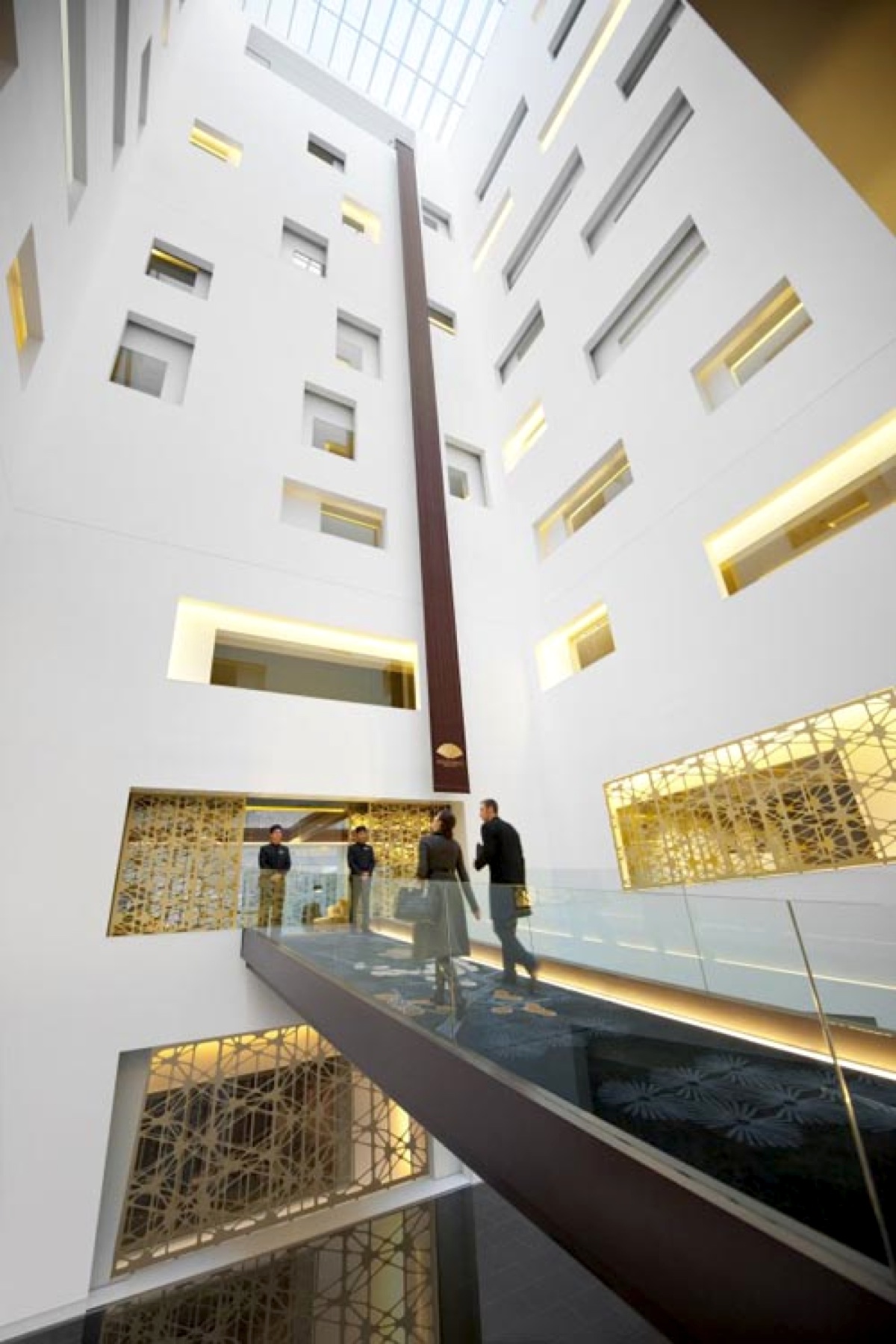 Were it a destination
hotel outside the
city, it would be worth the trip, but the hotel sits conveniently on
Passeig
de Gracia, one of the main boulevards, lined with designer names that define
couture, and a hop, skip, and jump to all the main tourists
sites.
Were it a destination
hotel outside the
city, it would be worth the trip, but the hotel sits conveniently on
Passeig
de Gracia, one of the main boulevards, lined with designer names that define
couture, and a hop, skip, and jump to all the main tourists
sites.
Spanish
architect Patricia Urquiola designed the hotel, retaining the general
theme of
Mandarin-Oriental Hotels, while showcasing her own
contemporary
style
relating to the city. The
building
once
housed
a
bank’s
head
office, which Urquiola
took advantage of by crafting a bar out of the safe deposit room and
designing
doors for the guest rooms as thick as a bank safe door. The rooms are done in tones of whites,
creams and beiges, with beautiful wood floors, frosted
sliding
bathroom
doors,
and
waterfall
showerheads.
Outside
in
the
inner
courtyard
lies
the
Mimosa
Garden,
660
square
meters
of
specially
roped
furniture,
mimosas
and
other
outdoor
plants,
making
it a relaxing
and
tranquil location to get away from the busy streets and to enjoy a
small bite
to eat and perhaps a glass of sparkling cava. If that isn’t relaxing
enough,
than make sure to take advantage of the spa with a swimming pool, steam
bath
room, gym, or have a massage therapy session. And definitely make stop
at the
Banker’s Bar for one of their signature cocktails.
When
it’s
time
to
sit
down
and
enjoy
dinner,
the
Mandarin
Oriental
has
two
restaurants,
Blanc and Moments. Blanc (right)
is
an
open,
airy
dining
room that can be
seen from the lobby, fashioned with a “hanging garden” and throne-like
furniture. The menu offers classic Spanish dishes as well as 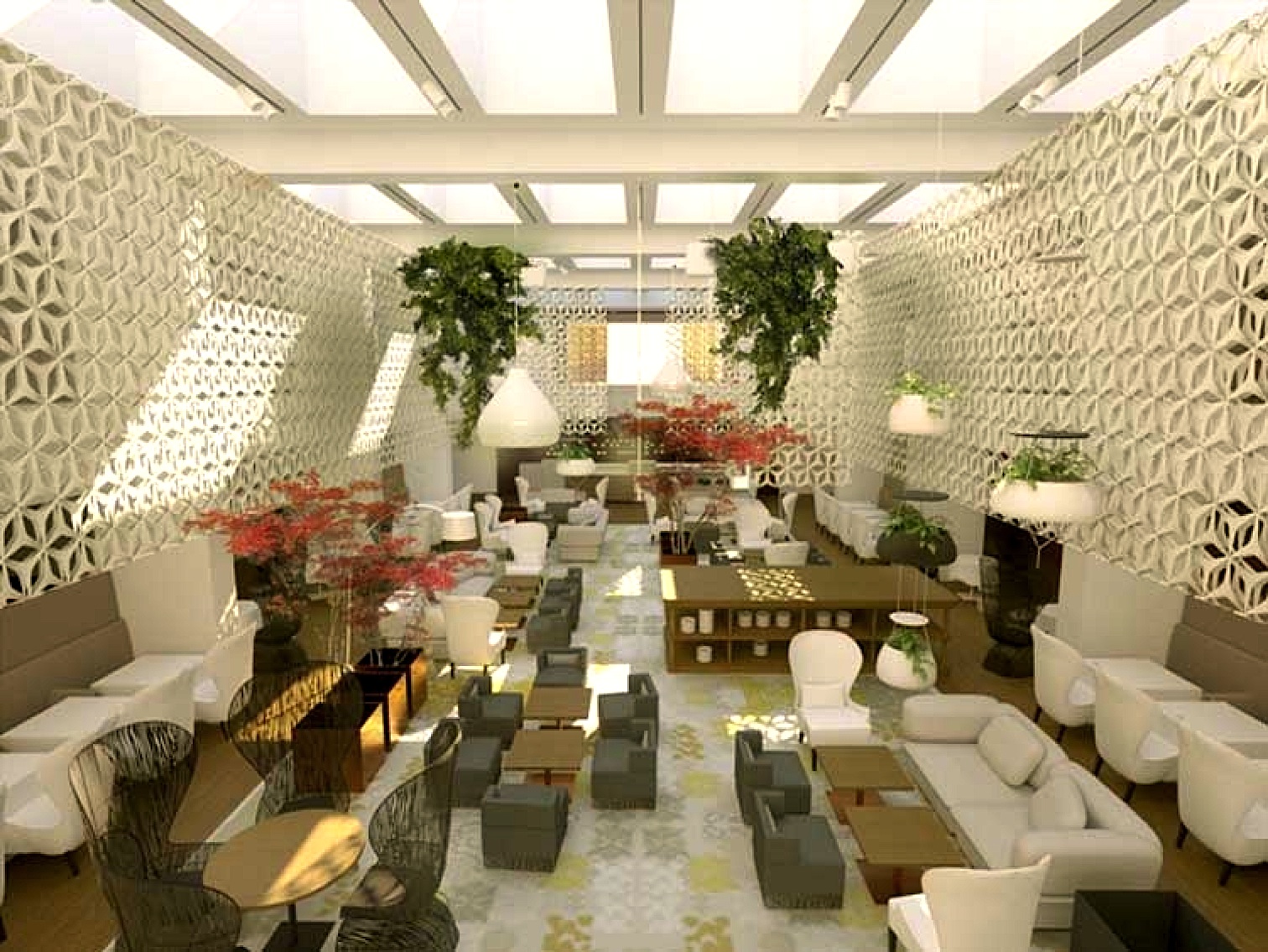 Southeast
Asian
dishes, from Peking duck spring rolls with hoisin sauce to Indonesian
stir
fries with shrimp, chicken, and kebabs. Moments, with
50 seats, is a much more refined and elegant restaurant
offering
traditional Catalan cuisine by Michelin star chef
Carme
Ruscalleda. Diners
can choose from either an à la carte menu or a
dégustation tasting that focuses
on local dishes and stays true to neighboring products.
Southeast
Asian
dishes, from Peking duck spring rolls with hoisin sauce to Indonesian
stir
fries with shrimp, chicken, and kebabs. Moments, with
50 seats, is a much more refined and elegant restaurant
offering
traditional Catalan cuisine by Michelin star chef
Carme
Ruscalleda. Diners
can choose from either an à la carte menu or a
dégustation tasting that focuses
on local dishes and stays true to neighboring products.
For
a
place
to
stay
that
is
not
quite
that
high
on
the
hog,
consider
Hostal
Goya, a quaint three-story hostel
located
in
the
center
of
the
Ciutat Vella,
the
Old City.
Upon
arriving, we were greeted warmly by our obliging host, who pointed out
all the
places we should see and recommended some tapas bars and restaurants to
eat at.
The room was small but cozy
with
a
queen size bed, and a modern touch to its
homey design and bathroom. Rooms are available with or
without
bathrooms; we paid €90 a night, which is a great rate for those
traveling on
a budget.
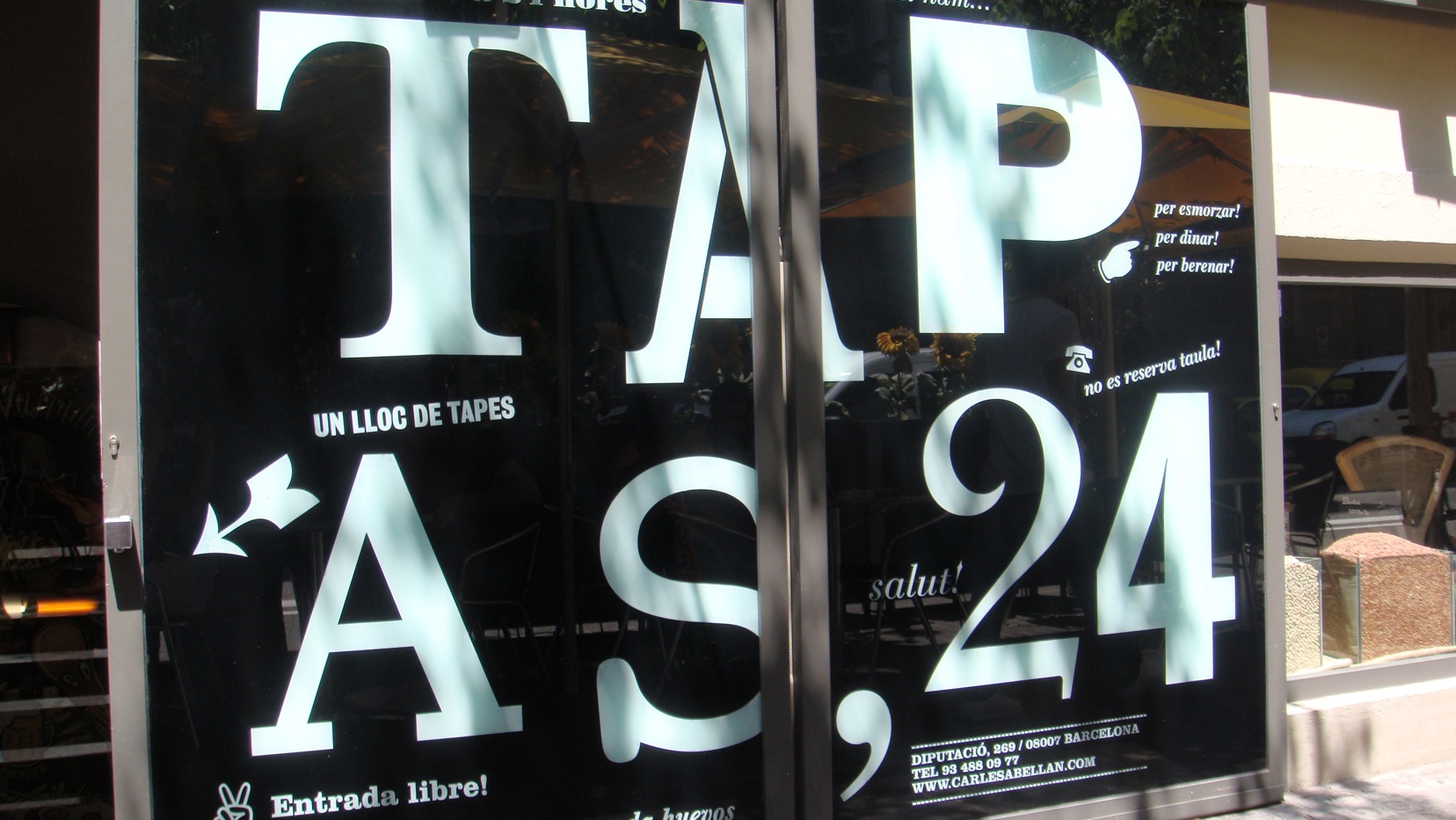 One
of
my
favorites is Tapas, 24, owned
by
Chef Carles
Abellan, a modern and chic tapas bar with
its name written in large white print across its
black glass window.
Inside is a brightly designed interior (below) with a lively and energetic
staff; this
place is always busy, so don’t be surprised if you have to wait for a
space to
eat, and when you do get an inch or two of the counter or a table, the
food comes flying out so as to get you out.
One
of
my
favorites is Tapas, 24, owned
by
Chef Carles
Abellan, a modern and chic tapas bar with
its name written in large white print across its
black glass window.
Inside is a brightly designed interior (below) with a lively and energetic
staff; this
place is always busy, so don’t be surprised if you have to wait for a
space to
eat, and when you do get an inch or two of the counter or a table, the
food comes flying out so as to get you out.
But
even
though you might feel rushed, the food is well worth it. Things to try?
The Iberico
ham and cheese sandwich with black truffles is decadent, or the same
ham as a croqueta (very
traditional to this region) with its light and crunchy outside
and a creamy béchamel inside, with little nuggets of jamon. Papas Bravas is
another
traditional
dish
of
fried
potatoes
with
a
slightly
smokey
hot
sauce
and
mayonnaise,
or
try
the sliced bacalao
served with
thinly sliced raw onions, diced tomato, lemon, olive oil and a
tapenade.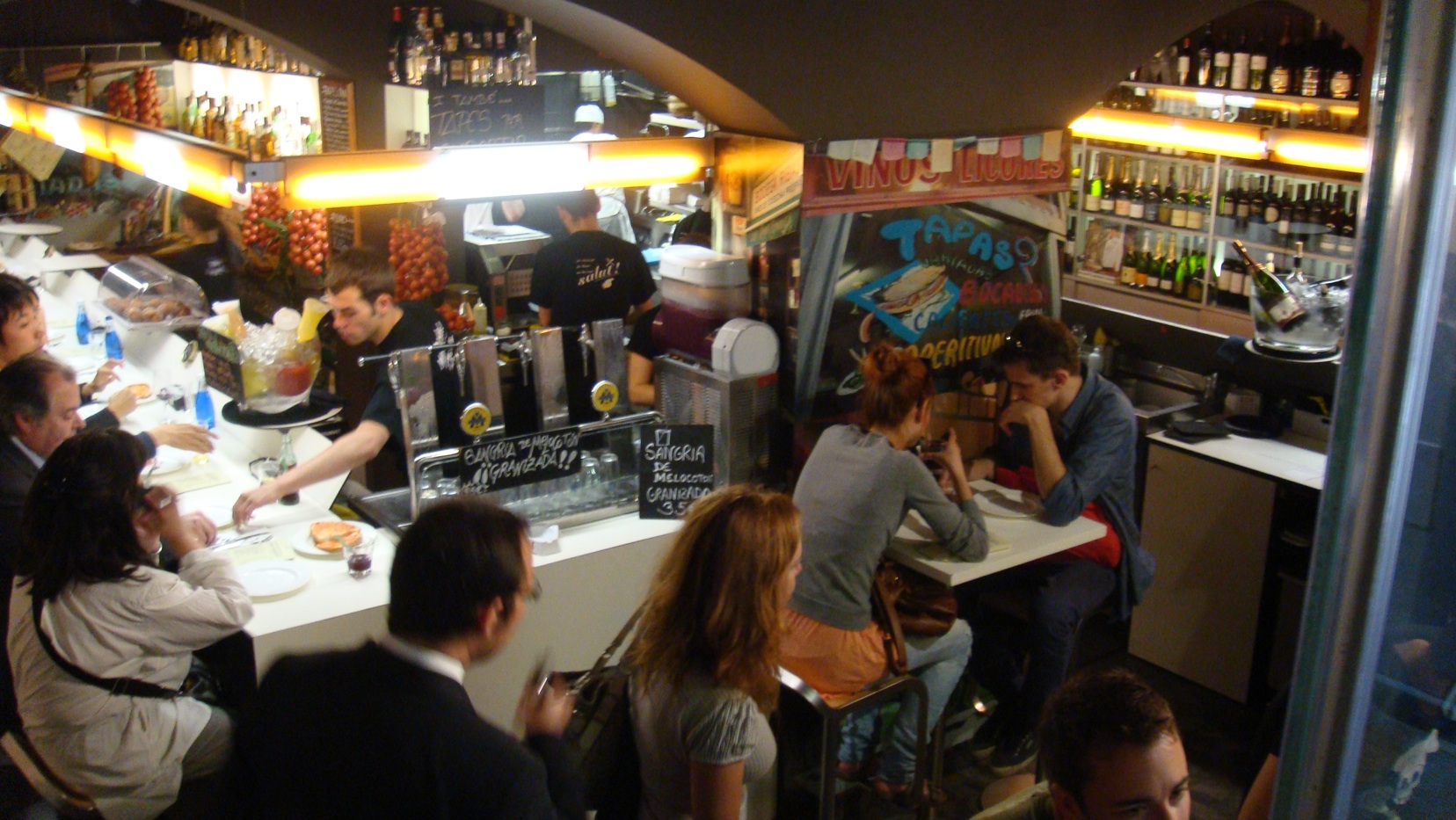 In many of these tapas bars, you will be given a
complementary dish of toasted or grilled bread spread with the juices
and pulp
of fresh tomatoes--pan con tomate--olive
oil
and
sea
salt.
Tapas,
24
offered
the
best
example
of
this
traditional
starter
of
any
we
tried on our trip.
In many of these tapas bars, you will be given a
complementary dish of toasted or grilled bread spread with the juices
and pulp
of fresh tomatoes--pan con tomate--olive
oil
and
sea
salt.
Tapas,
24
offered
the
best
example
of
this
traditional
starter
of
any
we
tried on our trip.
Other notable tapas bars in Barcelona, located
in the
Boqueria Market off of the city’s main drag, La Rambla, are Bar Boqueria, offering either standing room or
bar stools to sit at,
where you
enjoy true Catalan tapas such as razor clams à la
plancha (on
the
griddle)
with
minced
fresh
garlic,
olive
oil,
lemon
juice
and
chopped
parsley,
or
charred
pimientos
with sea salt,
olive oil
and lemon juice. (Make sure to specify which ones you want because they
offer
red, large green and the classic small green pimientos.)
Unlike most of the world--Greece and Brazil
excepted--where
people eat
dinner between seven and eight o’clock, Barcelonans don’t eat until
at least
nine or ten. Lunch usually doesn't begin till two PM, and you can
literally wait outside the restaurant door until they open it at that
late hour. When the clock
strikes nine, make sure to make it to Can
Majo, one of several seafood restaurants
located down by the harbor called Barceloneta. Con Majo has a very
minimal
décor, with wooden floors, white
walls adorned with Spanish paintings and a vibrant sky blue trim.
To start off our meal there, we ordered steamed
barnacles
drizzled with just a little olive oil, and the grilled tender octopus
with
potatoes, paprika, and olive oil, both
simple and unpretentious, but perfectly done. For our
main course,
we had the seafood paella of mussels, clams, langoustines, and shrimp.
The rice
was well cooked, as was the seafood, with a fair amount of olive oil
but
slightly aggressive with the salt—not the only time we found local
cooks to
have a heavy hand with that seasoning.
Perfectly cooked was the rodaballo
(turbot), cut like steak, with the bones still
in it,
keeping the meat moist and tender through cooking, dressed with olive
oil and
accompanied with simple vegetables. To
complement the food, we had a bottle of Pazo
de Señorans 2009 Albariño,
which was bright, crisp, minerally, and slightly fizzy.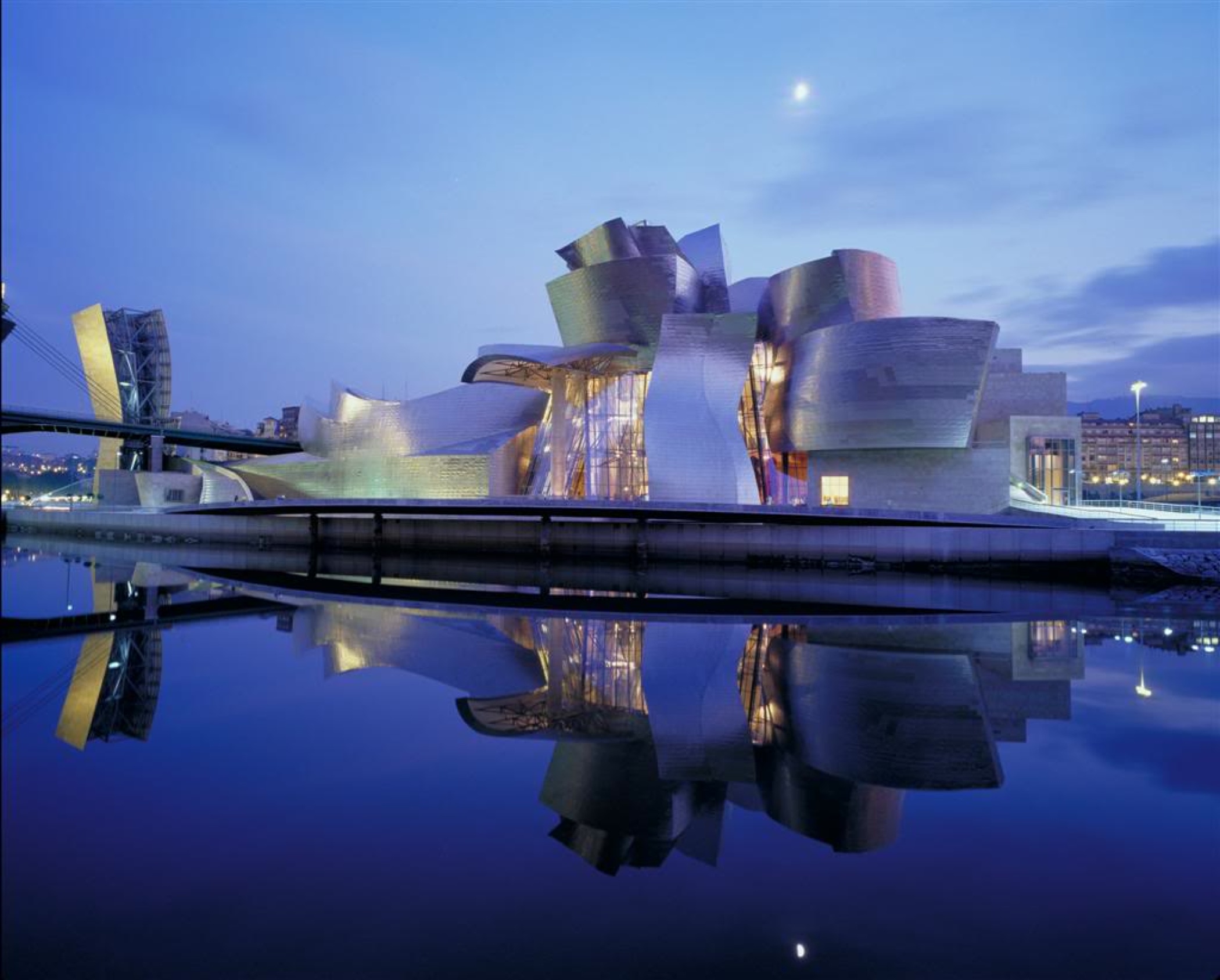
A
s much as
we enjoyed Barcelona, it was time for us to move on and see
aBilbao, the city that is home to the world-renowned
Guggenheim Museum (right),
designed by architect Frank Gehry.
Bilbao is the largest city in the Basque country, with a very high
population in comparison to others, and a very active financial sector,
although it sindustry has languished and its arts scne filled in the
gaps. It
definitely feels much more modern than the rest of the Basque
cities.
We checked
into
the Hotel Miro
(below),
a fairly new boutique hotel that runs parallel to the river and is
located five
minutes walking distance from the center of town. Ask for a room
on the
street side and you’ll enjoy a perfect view of the Guggenheim 200 yards
away. Inside,
the hotel is decorated with an art collection by artists like
Tessio Barba, Concha Prada, and Alberto Peral. There is also a courtesy
bar
downstairs where complementary wine, sodas, and espresso are available.
The
Miro Hotel has fabulous rooms, superior service and hospitality,
reasonable rates, and near perfect location. An Urban Double room
currently goes for €255, but upgrades are currently being offered
if booked online.
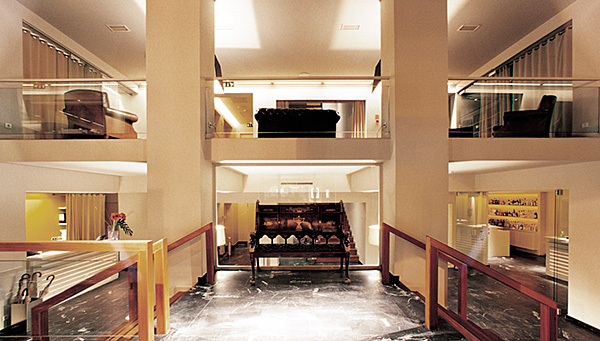 Bilbao
like
its
neighboring
cities,
has
pintxos
bars and restaurants that can stand beside the best. A few places to
note are El Globo,
La Viña
and Bitoque.
El Globo and La Viña happen to be right next to each other, but
it’s
friendly competition; each is known for its own items and there’s
a
good chance that a couple or a group you see at one, you’ll see again
at the
other shortly after. At El Globo
be sure to have the morcillo de leon,
a blood sausage rolled with peanuts and fried; platanos with
an
apple
chutney
and
bacon
served
warm,
spider
crab
gratinado
on a crostin; or queso cabra con
cebolla contitada, fried goat’s cheese with onion confit. El
globo has a large inside bar dressed
with dark lacquered wood, but if you prefer to sit outside, they have a
dining
area of about 30 seats where you can enjoy just some drinks or a small
bite to
eat. Try pretty much anything you see on the menu but hold off on the jamon,
which is better at La Viña.
Bilbao
like
its
neighboring
cities,
has
pintxos
bars and restaurants that can stand beside the best. A few places to
note are El Globo,
La Viña
and Bitoque.
El Globo and La Viña happen to be right next to each other, but
it’s
friendly competition; each is known for its own items and there’s
a
good chance that a couple or a group you see at one, you’ll see again
at the
other shortly after. At El Globo
be sure to have the morcillo de leon,
a blood sausage rolled with peanuts and fried; platanos with
an
apple
chutney
and
bacon
served
warm,
spider
crab
gratinado
on a crostin; or queso cabra con
cebolla contitada, fried goat’s cheese with onion confit. El
globo has a large inside bar dressed
with dark lacquered wood, but if you prefer to sit outside, they have a
dining
area of about 30 seats where you can enjoy just some drinks or a small
bite to
eat. Try pretty much anything you see on the menu but hold off on the jamon,
which is better at La Viña.
 La
Viña (below) is
a slightly brighter establishment with a lot of activity and a
great
energy. Here you’re served promptly and won’t have to wait long to
catch a
bartender’s attention. La Viña seems to be known for their jamon, served in a variety of ways. The crostini with
tomato, garlic
and olive oil, were so good I ordered four. Another tasty dish
was a
soft poached egg with béchamel, mushrooms, and foie gras
terrine, very good but
very rich. Don’t eat this first or you might not be able to eat as much
of the jamon as you’d like.
La
Viña (below) is
a slightly brighter establishment with a lot of activity and a
great
energy. Here you’re served promptly and won’t have to wait long to
catch a
bartender’s attention. La Viña seems to be known for their jamon, served in a variety of ways. The crostini with
tomato, garlic
and olive oil, were so good I ordered four. Another tasty dish
was a
soft poached egg with béchamel, mushrooms, and foie gras
terrine, very good but
very rich. Don’t eat this first or you might not be able to eat as much
of the jamon as you’d like.
Spain
is
country
built
on
the
love
of
food,
friends,
wine,
more
food,
so
to
fully
experience
it, don’t just fill up on their
splendid architecture
and rich history, but save plenty of room for its wonderful,
vibrant
gastronomy.
~~~~~~~~~~~~~~~~~~~~~~~~~~~~~
by John Mariani
THE MARK RESTAURANT BY JEAN-GEORGES
The Mark Hotel
25 East 77th Street (off Madison Avenue)
212-606-3030
www.themarkrestaurantnyc.com
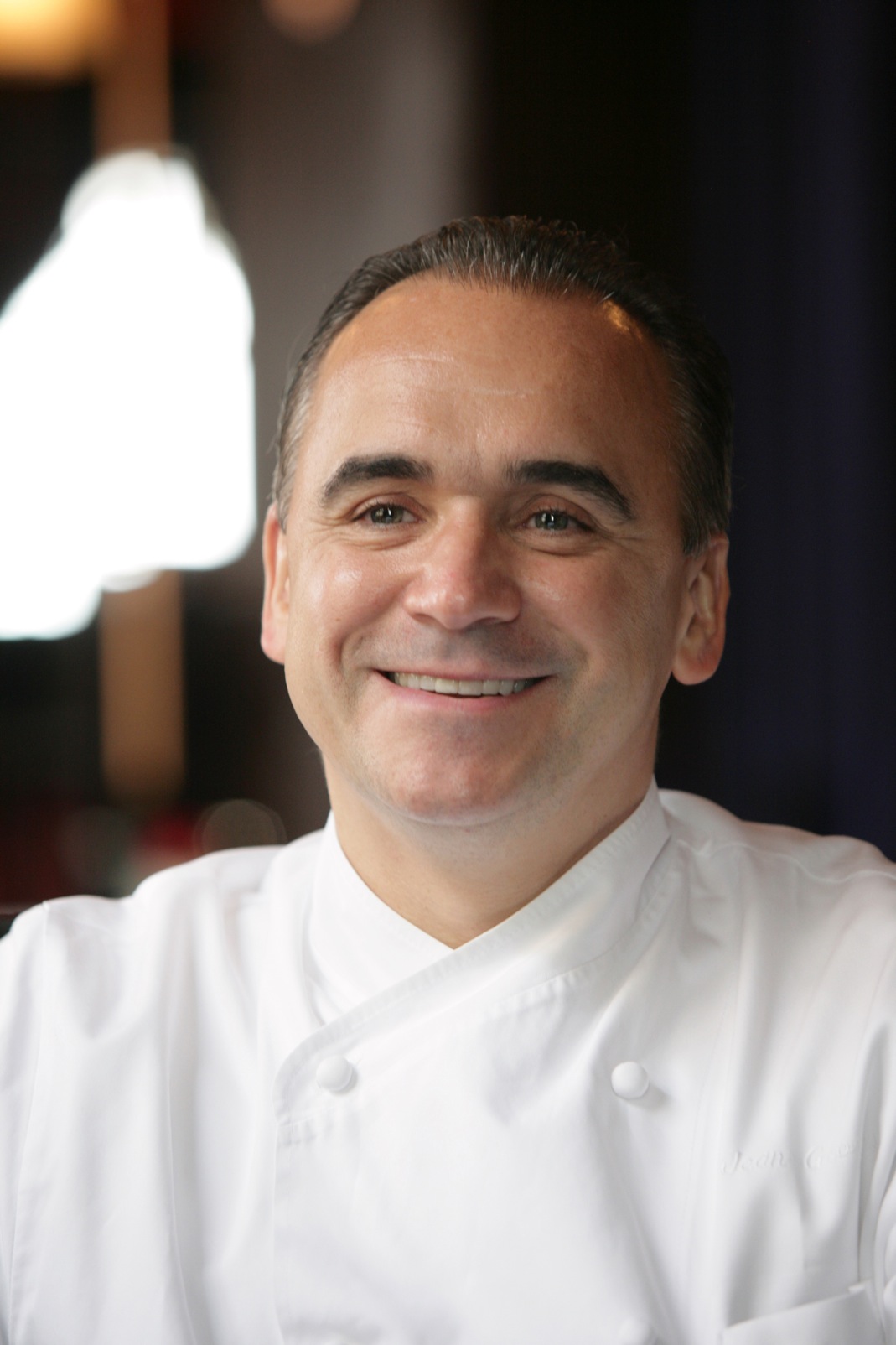 The
name
Jean-Georges
Vongerichten
has justified world recognition in culinary circles for
advancing good taste
in myriad forms, not least at that mid-level that is,
these days,
where most people like to dine out. I say "dine out" as opposed
to nosh., for the media's infatuation with burger bars and sandwich
shops,
pizzerias and cupcake stores has made the existence of a good dish or
two reason enough for hyperventilated praise. Vongerichten,
whether
conceiving an Asian noodle house like Matsugen in New York or an
over-the-top
steakhouse like Prime in Las Vegas, has never done less than give an
entire
menu enormous his total thought and individuality. His flagship
in NYC, Jean-Georges, is
still one of America's finest and most inventive
dining
experiences, and although not every foray into this or that genre has
met with
success or critical approval, they are always exciting and quite unlike
any
place else.
The
name
Jean-Georges
Vongerichten
has justified world recognition in culinary circles for
advancing good taste
in myriad forms, not least at that mid-level that is,
these days,
where most people like to dine out. I say "dine out" as opposed
to nosh., for the media's infatuation with burger bars and sandwich
shops,
pizzerias and cupcake stores has made the existence of a good dish or
two reason enough for hyperventilated praise. Vongerichten,
whether
conceiving an Asian noodle house like Matsugen in New York or an
over-the-top
steakhouse like Prime in Las Vegas, has never done less than give an
entire
menu enormous his total thought and individuality. His flagship
in NYC, Jean-Georges, is
still one of America's finest and most inventive
dining
experiences, and although not every foray into this or that genre has
met with
success or critical approval, they are always exciting and quite unlike
any
place else.
So the opening of The Mark Restaurant by Jean-Georges, in a space that has seemed doomed for years as a restaurant space, is again cause to understand Vongerichten's flexible focus on refinement. Indeed, it's been called "Jean-Georges light," but that really has nothing to do with anything. The dishes may be somewhat less complex than at Jean-Georges but they are no less tasteful and are always beautifully presented.
The
awkward
space--which
used
to
be
part
of the
problem here at the Mark Hotel--requires passage through a small bar
lounge,
down a dark hall and down a couple of steps to an interconnection of
rooms that
must cause panic attacks among those who fear they might be seated at a
"B" table. I, for one, can't quite figure out which the
"A" tables might be except that those in the room nearest the steps
are probably the most sought after. Décor has New York
swank to
it, a
kind of posh moderne as easily found in London or Paris these days, and
the Mondrian lighting and color sof the rooms make it always convivial,
if somewhat loud. Its crowd seems mostly locals from the Upper East
Side, with a lot of pretty, well-bronzed young people just back from
the Hamptons and a lot of others who look like Bernie and Ruth Madoff.
The
menu
is
simply
laid
out
to
please everyone, from
"Raw" to appetizers, pizza, pasta, fish, 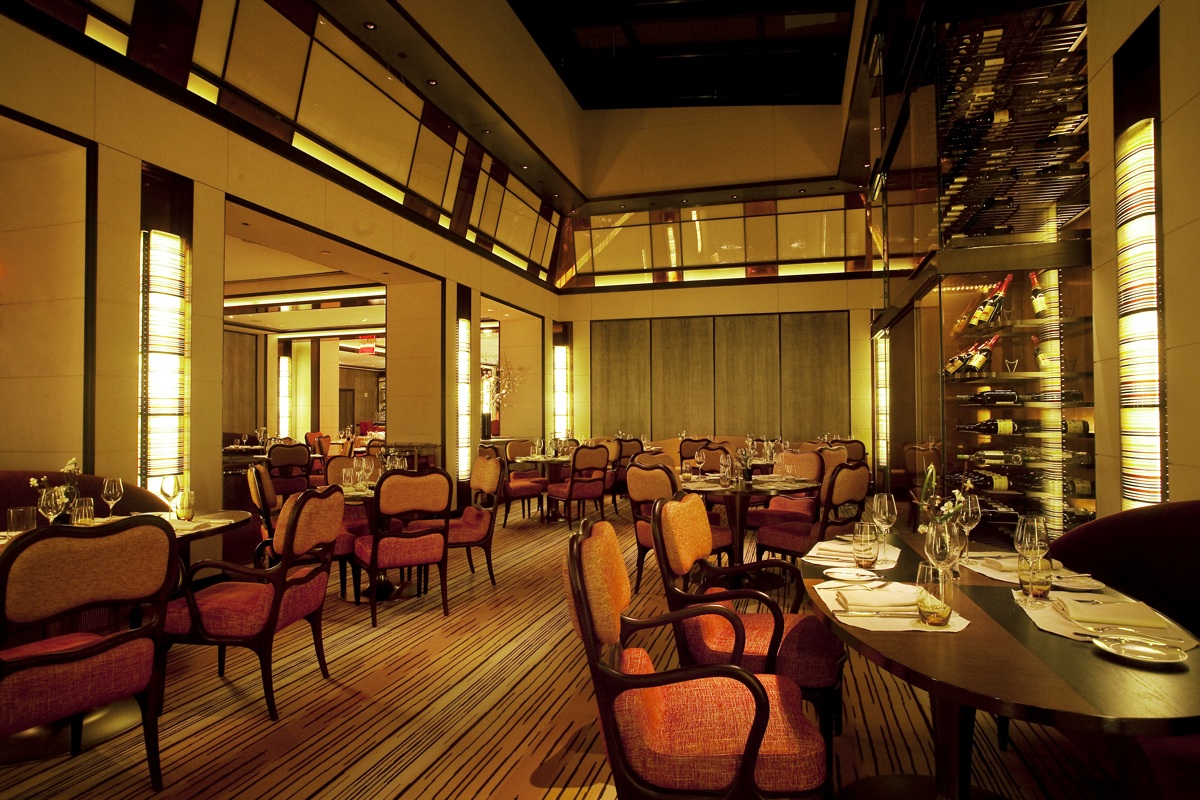 meat, "Simply
Cooked" and sides, all under exec chef Pierre Schutz's hand. Nothing
I tasted on two visits was anything but very good and most of it rose
to
levels of
real excellence, beginning with a shooter of well-spiced
gazpacho that I
count as one of the best things I've tasted all year--I'd love a whole
bowl of
it. Sweet pea soup with parmesan foam almost acts like a balm
after that
jolt of pepper-laced tomato, and it as delicious as summer
itself.
Roasted beets might have been a cliché had they not come with a
fondue
of
goat's cheese, the crunch of walnuts, the spurt of grapes and a little
bitter
endive. Steamed shrimp salad as tender as any in the finest
Chinese
restaurant are a good beginning, too, with sweet avocado and an enoki
Champagne
dressing.
photo:
Julie
Glassberg
meat, "Simply
Cooked" and sides, all under exec chef Pierre Schutz's hand. Nothing
I tasted on two visits was anything but very good and most of it rose
to
levels of
real excellence, beginning with a shooter of well-spiced
gazpacho that I
count as one of the best things I've tasted all year--I'd love a whole
bowl of
it. Sweet pea soup with parmesan foam almost acts like a balm
after that
jolt of pepper-laced tomato, and it as delicious as summer
itself.
Roasted beets might have been a cliché had they not come with a
fondue
of
goat's cheese, the crunch of walnuts, the spurt of grapes and a little
bitter
endive. Steamed shrimp salad as tender as any in the finest
Chinese
restaurant are a good beginning, too, with sweet avocado and an enoki
Champagne
dressing.
photo:
Julie
Glassberg
Foie gras is silky and finely textured, calamari come simply, crisply fried, and a peekytoe crabcake comes with pink grapefruit, avocado and ginger. There are four pizzas and they're all right--try the black truffle and fontina version--if nothing illustrious, and while the angel's hair spaghetti with asparagus, shiitakes and parmesan is a lovely light dish and the three-cheese ravioli with spring peas and basil its equal, they could use more punch. The very best of the pasta was fresh fettuccine with Meyer lemon, parmesan and black pepper, all incorporated in perfect equilibrium.
The
"simply
cooked"
dishes
are
just
that--scallops,
veal
chop,
and so on, with a succulent chicken for two. More interesting is
the
grilled black sea bass with braised fennel and carrots and Cerignola
olives,
while that veal chop can be enhanced with a spring onion fondue of
wondrous
lightness along with rhubarb and English peas. Hefty juicy
grilled lamb
chops (below) come with
roasted vegetables and the sprightly crust of black olive
crumbs. And yes, the French fries are just about perfect.
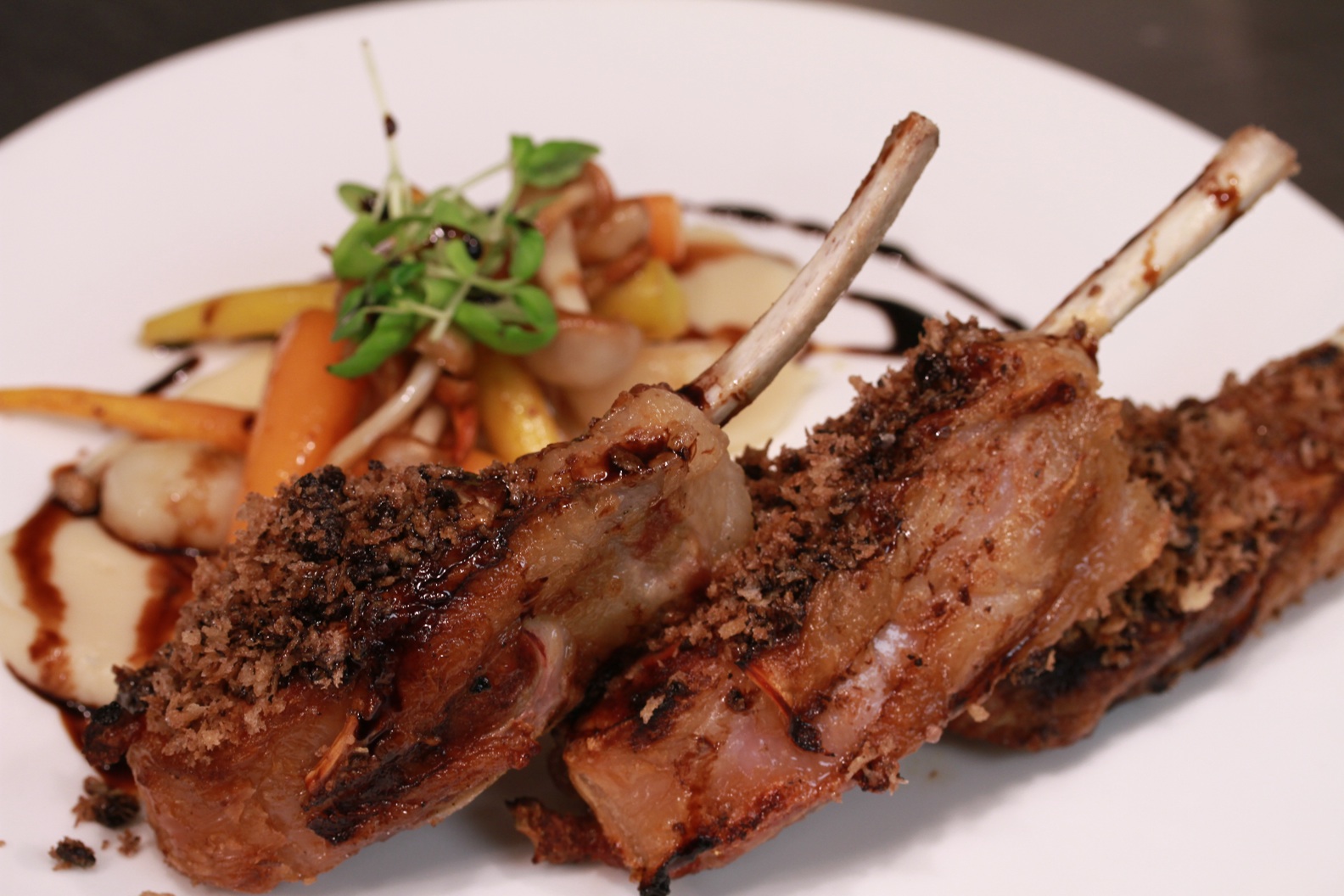 Desserts, surprisingly, were a
tad tame, more classic
than anything else, especially the selection of good, if not thrilling,
cakes
and tarts, along with Grand Marnier soufflé and mandarin sorbet.
Desserts, surprisingly, were a
tad tame, more classic
than anything else, especially the selection of good, if not thrilling,
cakes
and tarts, along with Grand Marnier soufflé and mandarin sorbet.
The winelist, overseen by the very knowledgeable and cordial Branden McRill, is marked by a judicious selection of good bottles under $50, along with some trophies for those who need them.
The only real disappointment at The Mark is the service staff, which on two occasions neglected to clear tables (cocktail glasses were not removed until dessert), wipe away crumbs, pour wines, or pay attention. One evening I watched as three captains stood on the entryway steps chatting with one another while a full house needed to be taken care of. I said to my wife, "Let's see how long it takes for one of them even to glance to their right to see if our section of the room requires attention." Nearly a minute went by, with all three gaily chatting away.
That
said,
JG
at
The
Mark
is
a very good, very
modern, and very sophisticated place without any of the
superciliousness that
might obtain elsewhere. Dress is all too casual, though most
people dress
well and appropriately, and the upper east side crowd is here in full
platoon,
both young and old. If you want to taste how Mr. Vongerichten has
evolved over twenty years, The Mark is an ideal spot to test the waters.
The
restaurant does breakfast, lunch, and dinner daily. Starters at
dinner run $11-$27, entrees $18-$46.
``````````````````````````````````````````````````````````````````````````
NOTES FROM THE WINE CELLAR
Piedmont’s
Dolcetto Is Only Sweet to the Budget
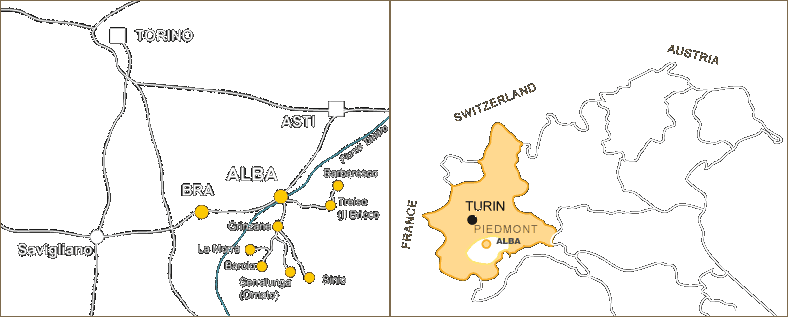 No
wine
name
seems
more
of
a
misnomer
than
Piedmont’s dolcetto, which in
Italian
means “little sweet one.” Piedmont does make sweet wines, like Asti
Spumante
and brachetto d’aqui, but dolcetto is a very dry red wine made from a
namesake
early-ripening, low acid workhorse grape that grows easily in soil
where the more
refined nebbiolo does poorly. Dolcetto is sweet only in the colloquial
sense of
the ripeness of its grapes and softness of its tannins.
No
wine
name
seems
more
of
a
misnomer
than
Piedmont’s dolcetto, which in
Italian
means “little sweet one.” Piedmont does make sweet wines, like Asti
Spumante
and brachetto d’aqui, but dolcetto is a very dry red wine made from a
namesake
early-ripening, low acid workhorse grape that grows easily in soil
where the more
refined nebbiolo does poorly. Dolcetto is sweet only in the colloquial
sense of
the ripeness of its grapes and softness of its tannins.References to the grape date to the 15th century, but only in the last decade has the varietal and the wine made from it acquired much of a reputation for real quality. As with Piedmont’s other commercial varietal, barbera, dolcetto is now the focus of the region’s finest and most expensive barolo and barbaresco estates, aware that a quality dolcetto sells well in the international market if priced right.
A stunning example of how a famous barolo vintner can produce a dolcetto of such quality is Aldo Conterno’s Masante 2007 from the Langhe region, where the vineyards were established in 1969. When I tasted the wine last week I was amazed at the depth and complexity that followed the expected deep purple color. It has aged impeccably, its fruit, acids, and tannins in perfect harmony, and at $20 a bottle a wine that represents extraordinary value.
(By the way, there are three other dolcetto-making Conternos in Piedmont—Fantino, Paolo, and Giacomo, who is related to Aldo—but they are completely independent of one another.)
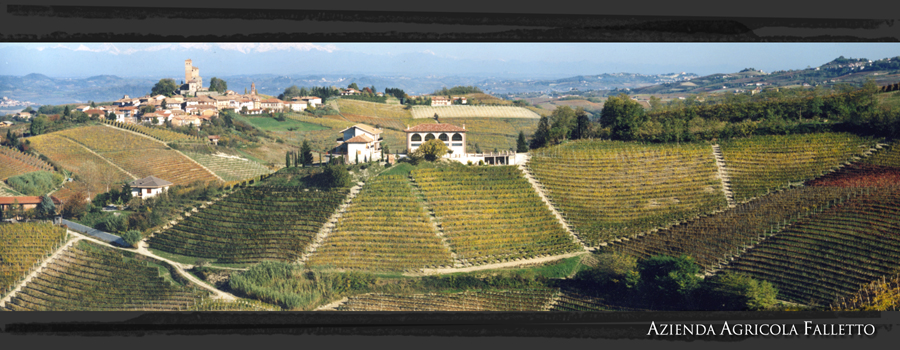
Bruno Giacosa (above) is another of the top guns in Piedmont, famous for its big, bold long-lived barbarescos and barolos, so I was not surprised by the tannic backbone of his Dolcetto d’Alba Falletto ($20), which Giacosa’s website describes as having a “bitterish aftertaste typical of this variety.” Up front, however, is a nice wave of fresh fruit flavors. It’s a wonderful wine to have with a saffron risotto with Parmigiano-Reggiano cheese.
Still developing its character, even after nine years, was Pio Cesare’s Dolcetto d’Alba 2000 ($20), whose tannins are still firm but whose flavors blossomed when paired with a thick, rare ribeye scented with a little rosemary. Pio Cesare goes back five generations, to 1881, and while they cling to traditions they themselves pioneered, their winery takes advantage of the most modern technical advances. Their dolcetto is made from grapes from several of the best terroirs in Serralunga d’Alba (The Ornato Estate), Grinzane Cavour (Cascina Gustava), and Treiso (Il Bricco Estate).
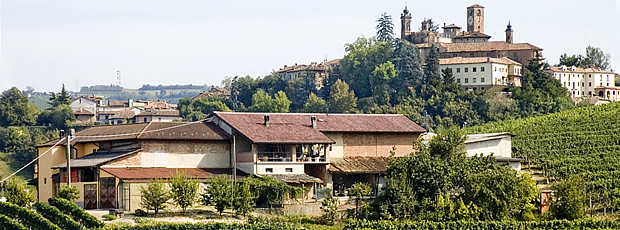 The late Pasquale Pelissero, who started
making wine in
his garage in the 1970s, is self-described as a “very conservative
wine producer,” but always open to new technologies. Now, under total
control of his daughter Ornella, the
winery (left) is still a
small boutique winery, which makes only 15,000 bottles
annually. The estate’s Dolcetto
d`Alba Cascina
Crosa 2008 ($15), made in the Langhe region, has a very deep
color and rich
tannins, but the process of microxygenation enhances the fruit so
obvious in
the bouquet. At 13 percent alcohol
this is a lovely, easy-to-drink expression of 21st century
dolcettos.
The late Pasquale Pelissero, who started
making wine in
his garage in the 1970s, is self-described as a “very conservative
wine producer,” but always open to new technologies. Now, under total
control of his daughter Ornella, the
winery (left) is still a
small boutique winery, which makes only 15,000 bottles
annually. The estate’s Dolcetto
d`Alba Cascina
Crosa 2008 ($15), made in the Langhe region, has a very deep
color and rich
tannins, but the process of microxygenation enhances the fruit so
obvious in
the bouquet. At 13 percent alcohol
this is a lovely, easy-to-drink expression of 21st century
dolcettos.Stefano Farina, which has holdings in Piedmont, Tuscany, and Puglia, makes Dolcetto di Diano d’Alba 2008 ($10), a remarkable buy, for while it lacks the complexity of others I tasted, it is sturdy, with good dark fruit flavors and becomes looser and more interesting after a half hour in the glass.
Dolcetto is unlikely ever to achieve the status of barolo and barbaresco, but for a dry red wine that complements the complete range of meats in summer and winter, dolcetto has come a long way at a price level that makes perfect sense right now.
John Mariani's weekly wine column appears in Bloomberg Muse News, from which this story was adapted. Bloomberg News covers Culture from art, books, and theater to wine, travel, and food on a daily basis.
~~~~~~~~~~~~~~~~~~~~~~~~~~

MAN ABOUT TOWN
by
Christopher Mariani
SOUTHERN CAL LUXURY HOTELS OFFER
CULINARY EDUCATIONS
Education in any form is a very good thing, and I, of course, have a soft spot for food. So it is great to see hotels taking an interest in not just feeding its guests, but enlightening them on what they are eating. Here are two hotels who do just that.
The Montage Laguna
Beach hotel has used many of its resources to put together an
educational culinary and wine program highlighted
throughout the hotel's three restaurants, The Loft, Studio, and the Mosaic Bar and Grille.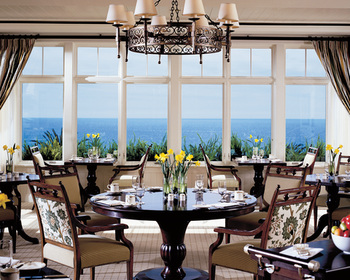 The Loft (right), headed by chef de cuisine
Casey Overton, focuses strictly on American cuisine, but beyond the dining experience, the restaurant offers
guests a chance to expand one's palate by hosting an
interactive cheese tasting of over 150
selections. The "Artistry of Wine" program
is also held in the Loft,
and
offers guests an
opportunity to partake in a tasting of some
of the hotel’s 2,200 different wine labels to understand the
differences
between multiple wine varietals and regions found around the world.
The Loft (right), headed by chef de cuisine
Casey Overton, focuses strictly on American cuisine, but beyond the dining experience, the restaurant offers
guests a chance to expand one's palate by hosting an
interactive cheese tasting of over 150
selections. The "Artistry of Wine" program
is also held in the Loft,
and
offers guests an
opportunity to partake in a tasting of some
of the hotel’s 2,200 different wine labels to understand the
differences
between multiple wine varietals and regions found around the world.
The Studio is run by executive
chef Craig Strong, showcasing modern French cuisine with California
influences, incorporating dishes like sautéed
Hudson Valley Farms duck and roasted Monterey calamari that both re-affirm his claim to a commitment
to local fisherman, growers and farms. The last of the three
restaurants
is the Mosaic Bar and Grille, located on the bluff-top terrace and
serves nothing more than high-end poolside
dishes like local
halibut tacos and grilled Maine lobster sandwiches.
The Montage also conducts special
culinary
programs like the "Epicurean adventure," a thee-night cooking and wine
excursion by way of yacht to Catalina Island for lunch and dinner, and
a private flight to Napa Valley to taste and compare some of its
fantastic
wineries all for around $25,000 for two, who said education was cheap.
The Petit Ermitage Hotel is a boutique hotel that promotes a Bohemian way of life, and like the Montage, does its fair share of events to culture its guests about food and wine. Executive chef Joseph Antonishek shares all of his culinary talent and knowledge at the hotel's Private Rooftop Club, which is split into two different spaces, the Butterfly Bar and the English Garden, both with a 360-degree view of the Hollywood Hills and focuses around a butterfly and hummingbird sanctuary that is registered with the National Wildlife Federation.
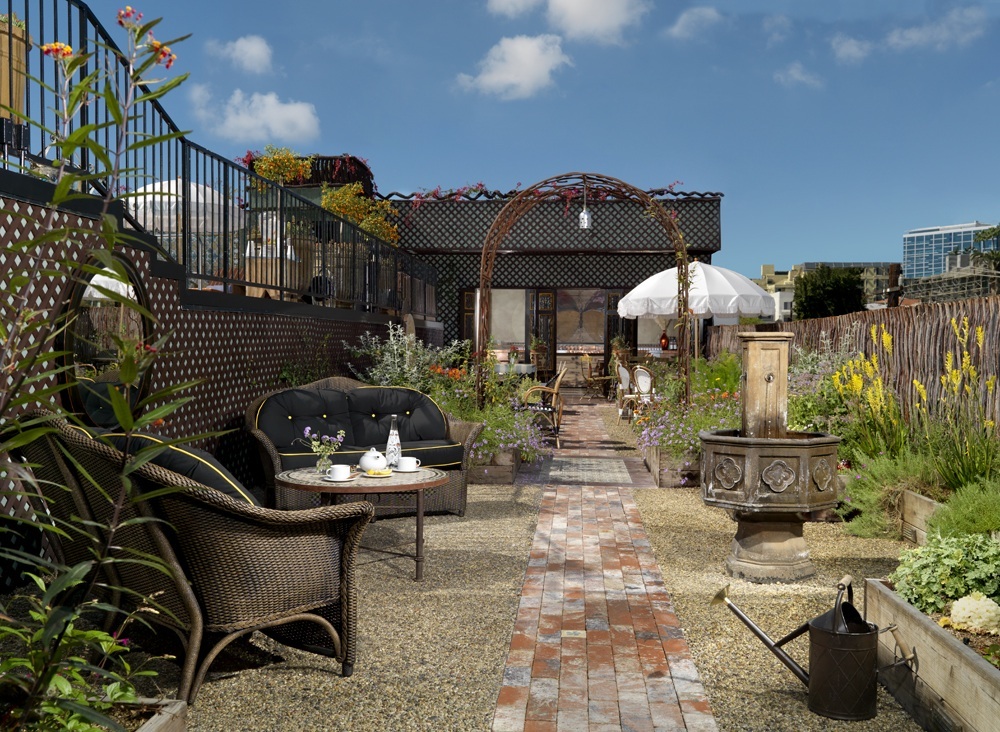 The
garden hosts monthly culinary, wine and spirit events like vodka and
caviar tastings, sake and scotch tastings paired with food
prepared by Chef Antonishek. The Summer
Supper Series takes place each Thursday, and offers a limited menu that
never repeats, created with separate items never found on the regular
lunch and dinner
menu, forcing guests to venture out of their comfort zone.
The Garden also has special wine dinners
that offer the guests a chance to learn a bit more about goes into
the decisions involved with pairing the right wine with food.
The
garden hosts monthly culinary, wine and spirit events like vodka and
caviar tastings, sake and scotch tastings paired with food
prepared by Chef Antonishek. The Summer
Supper Series takes place each Thursday, and offers a limited menu that
never repeats, created with separate items never found on the regular
lunch and dinner
menu, forcing guests to venture out of their comfort zone.
The Garden also has special wine dinners
that offer the guests a chance to learn a bit more about goes into
the decisions involved with pairing the right wine with food.
Chef Antonishek is a firm believer in farm-to-table ingredients and has put together an interestingly diverse menu for the garden with items like oysters on the half-shell, beef carpaccio, terrine of foie gras, coconut-crusted crab cakes, rainbow trout with lentils and wild mushrooms, and a lamb cous cous in coconut milk with fresh mint leaves, candied kumquats, pistachios and cheese.
According to the Petit Ermitage, it looks like the Bohemians truly valued food and wine.
~~~~~~~~~~~~~~~~~~~~~~~~~~~
MICHAEL BATTERBERRY, FOOD EDITOR, DIES AT 78
by John Mariani
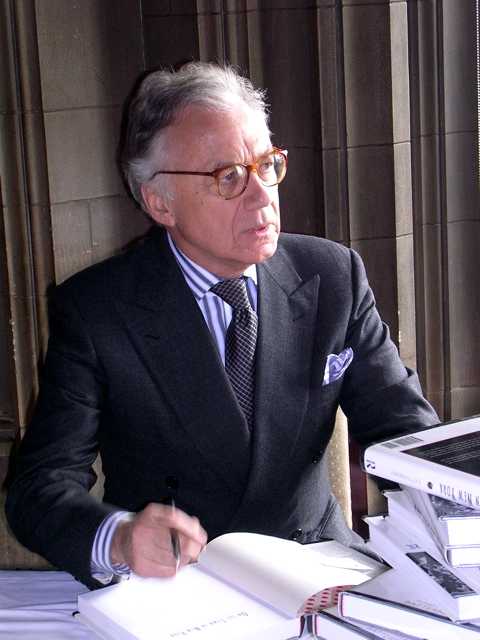 Back
in
1978,
Michael
Batterberry made me wait interminably to see him in
the reception room of Food & Wine
Magazine, which he had recently founded. Just as I was about to leave
in frustration, Michael came bounding from the office door, his jacket
buttoned, apologizing with such sincerity that I knew I was in the
presence of that rare thing in publishing, the true gentleman.
Not for him the rough house antics of the cynical newspaperman or the
effete snobbishness of a style editor. Michael was a man of exceptional
intelligence, honed through life experiences (he dropped out of
Carnegie Mellon) that included being a painter, an interior designer,
and even a saloon singer in Venezuela, Rome, and other international
settings where his rich mid-Atlantic baritone fit him as well as his
impeccably tailored double-breasted suits and English spread collars.
Back
in
1978,
Michael
Batterberry made me wait interminably to see him in
the reception room of Food & Wine
Magazine, which he had recently founded. Just as I was about to leave
in frustration, Michael came bounding from the office door, his jacket
buttoned, apologizing with such sincerity that I knew I was in the
presence of that rare thing in publishing, the true gentleman.
Not for him the rough house antics of the cynical newspaperman or the
effete snobbishness of a style editor. Michael was a man of exceptional
intelligence, honed through life experiences (he dropped out of
Carnegie Mellon) that included being a painter, an interior designer,
and even a saloon singer in Venezuela, Rome, and other international
settings where his rich mid-Atlantic baritone fit him as well as his
impeccably tailored double-breasted suits and English spread collars.With his wife Ariane he wrote one of the finest chonicles of New York social life (still in print), On the Town in New York, From 1776 to the Present (1973), and the couple seemed part of a charmed circle that included everyone from New York's fashion industry to Hugh Hefner, who put up some of the money to found what was originally called the International Review of Food & Wine, later Food & Wine, a magazine that took a different tack from other food monthlies, more sophisticated than the supermarket variety but not as elitist as Gourmet at the time. Food & Wine, which they later sold to American Express, was the first to explore and promote Americans' new fascination with foods of all kinds, and it helped make stars of young chefs like Wolfgang Puck, Larry Forgione, Jeremiah Tower, and so many others, while championing good trends and sending up bad ones. I was very proud to write for the magazine on occasion, not least because Michael Batterberry's editorial apporoval was something worth cherishing.
The Batterberrys then went on to publish Food Arts
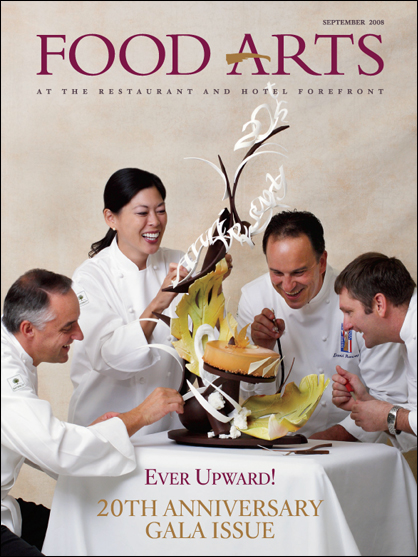 for
M.
Shanken
Communications,
a magazine that served the restaurant
industry in a way that veered away from competitors whose coverage of
food products and restaurant chains was guided wholly by food
corporation ads. Food Arts
was newsy, gossipy, and full of stories about what was going on in top
kitchens around the world, written by the top food writers of the
day. The introduction to each issue, which Michael and Ariane
wrote, was always an insighful focus on something that was burgeoning
and important to restaurateurs, almost always a subject others had yet
to notice. The writing was always urbane, the style witty, the
level of scrutiny canny.
for
M.
Shanken
Communications,
a magazine that served the restaurant
industry in a way that veered away from competitors whose coverage of
food products and restaurant chains was guided wholly by food
corporation ads. Food Arts
was newsy, gossipy, and full of stories about what was going on in top
kitchens around the world, written by the top food writers of the
day. The introduction to each issue, which Michael and Ariane
wrote, was always an insighful focus on something that was burgeoning
and important to restaurateurs, almost always a subject others had yet
to notice. The writing was always urbane, the style witty, the
level of scrutiny canny.Which is all that Michael was, for while he always stood out in any room he entered, whether it was an art museum, an opera lobby, or a meatpacking plant, he was professionally curious about everything, seeking both to educate himself as well as provide new information for his readers. And although he could be momentarily off-putting to newcomers, his wit and self-effacement put them all at ease, which is the true mark of a gentleman who is never unintentionally rude. I recall once saying he looked very well and newly slim, and in that low-pitched James Earl Jones voice of his, he replied with Shakesperarean gravity, "Smoke and mirrors, smoke and mirriors."
Michael had been ill for some time over the past year but while drained of energy he was never less than himself. Losing his radiance, elegance, and disarming wit is to lose something unique in the true sense of someone whose qualities were nonpareil. Like all the truly good ones, there may well never be another like him.
```````````````````````````````````````````````````````````````````````````
FOOD WRITING 101: DESCRIPTIONS OF FOOD AND DRINK
SHOULD NOT MAKE READERS SAY "YECCH!'

"We drink down a Tenuta delle Terre Nere, grown in the rocks of the Etna volcano, with an aromatic complexity that boggles the mind and leads to comments along the lines of `the filthiest wine I’ve ever had' and “it tastes like a very dirty child.' Another night, we head for Ristorante Lombardo. . . . The egg-yellow tortelli lucchese are a meaty double threat—there’s beef and pork and bread crumbs inside, and beef and pork (and tons of vegetables) in the sauce. Lombardo’s pillowy specimens are so rich, eating them feels like biting into a Swiss franc."--Gary Shteyngart, "Undiscovered Tusdcany," Travel & Leisure (July 2010).
 THE
#%^&* THING TASTES LIKE A @%&*% VERY DIRTY CHILD AND COSTS MORE
THAN TEN $^&%^** SWISS FRANCS!!!
THE
#%^&* THING TASTES LIKE A @%&*% VERY DIRTY CHILD AND COSTS MORE
THAN TEN $^&%^** SWISS FRANCS!!!
The
Oak
Bar
in
the
Plaza
Hotel
in
New
York
is
serving
a
“bi-polar
cocktail”
called
the
Mel Gibson that costs $19.
```````````````````````````````````
QUICK BYTES
✉ Guidelines for submissions: QUICK BYTES publishes only events, special dinners, etc, open to the public, not restaurant openings or personnel changes. When submitting please send the most pertinent info, incl. tel # and site, in one short paragraph as simple e-mail text, WITH DATE LISTED FIRST, as below. Thanks. John Mariani
* From Aug. 2
– 15, in NYC, El Porron will be offering a Paella
Festival
Special. For $30 pp, diners get 1 tapa of their choice from the
menu +
Paella Valenciana + a glass of sangria. Call 212-207-8349.
* On August 7
in New Orleans, the Southern Food and
Beverage Museum will host Ted Breaux as he discusses how he brought
the
American absinthe ban to an end and the history of the potent beverage.
Tastings follow the lecture. $10 pp. . . . On Aug.
8 the Museum will
hold its third annual fundraiser, Eat! Drink! SoFAB! Tailgating party.
Local chefs
will prepare sophisticated riffs on tailgating foods and local athletes
are
invited. Gal Holiday and the Honky Tonk Revue will play. $75 pp. Visit http://www.southernfood.org
or
504-569-0405.
* On Aug.
9-15 in San Francisco, CA,
the Golden Gate Restaurant Association and Visa Signature
present SF Chefs 2010,
to encourage attendees to “Taste,” “Mix, “Pair,”
and “Engage”. 25-$125 pp. Visit http://www.sfchefs2010.com.
Call
415-781-5700.
*
From Aug 9-14
and 16-21, restaurant Aquavit
in NYC will host
its annual Crayfish Festival., incl. 1lb. of peel & eat
crayfish and a crayfish smörgåsbord, available in the Bistro
for lunch ($28 pp)
and dinner ($35 pp). Visit www.aquavit.org
or call
212-307-7311.
* On August 14 in San Diego, Mistral at Loews Coronado Bay Resort will host an On the Farm lunch in the middle of Suzie’s Organic Farm with a reception and 3-course menu by Chef Marc Ehrler and Chef Patrick Ponsaty. $75 pp. Call 619-424-4476.
* On
Aug. 16 in New Orleans, LA,
Louisiana Cookin' presents
the
201
Chefs
to
Watch
Awards
Dinner at the Theatre at Harrah's New Orleans. Champagne with
5-course dinner at $125 pp. Visit www.louisianacookin.com/2010-chefs-to-watch-menu.
Black
tie
optional.
Call
888-884-4114.
* On Aug. 19
in Chicago, IL, Chef
Stephen Wambach of Epic
restaurant will host the first of his monthly Epic Table
series, consisting of an in-kitchen demo and multi-course lunch
surrounding the
theme of scallops. $29 pp., call 312)-222-4940.
* On
Aug. 27-29 in Napa Valley,
CA, Calistoga Ranch is offering the
exclusive "Ultimate Napa Valley
Weekend" incl.
two nights accommodations in a one-bedroom spa lodge, two spa
treatments, reservation for two at the iconic French Laundry with
special menu
paired with wine and private tour and tasting by town car at three Napa
Valley
cult wineries. $4,495 per couple.
Call 800-942-4220 or visit http://www.calistogaranch.com.
* From Aug. 28 – 29, the 1st Annual Big Aspen Barbeque Block Party presents pitmasters from across the country for a weekend of BBQ and events. Free admission with live music, educational barbeque seminars, and grilling demos; barbecue for only $8 per plate. Visit www.bigaspenbbq.org <http://www.bigaspenbbq.org> or call 970-920-4600. Proceeds support the Aspen Community Foundation.
``````````````````````````````````
Everett Potter's Travel Report:

~~~~~~~~~~~~~~~~~~~~~~~~~~~~~~~~~~~~~~~~~~~~~~~~~~~~~~~~~~~~~~~~~~~~~~~~~~
Eating Las Vegas is the new on-line site for Virtual Gourmet contributor John A. Curtas., who since 1995 has been commenting on the Las Vegas food scene and reviewing restaurants for Nevada Public Radio. He is also the restaurant critic for KLAS TV, Channel 8 in Las Vegas, and his past reviews can be accessed at KNPR.org. Click on the logo below to go directly to his site.

~~~~~~~~~~~~~~~~~~~~~~~~~~~~~~~~~~~~~~~~~~~~~~~~~~~~~~~~~~~~~~~~~~~~~~~~~~~
Tennis Resorts Online: A Critical Guide to the World's Best Tennis Resorts and Tennis Camps, published by ROGER COX, who has spent more than two decades writing about tennis travel, including a 17-year stretch for Tennis magazine. He has also written for Arthur Frommer's Budget Travel, New York Magazine, Travel & Leisure, Esquire, Money, USTA Magazine, Men's Journal, and The Robb Report. He has authored two books-The World's Best Tennis Vacations (Stephen Greene Press/Viking Penguin, 1990) and The Best Places to Stay in the Rockies (Houghton Mifflin, 1992 & 1994), and the Melbourne (Australia) chapter to the Wall Street Journal Business Guide to Cities of the Pacific Rim (Fodor's Travel Guides, 1991).

Family Travel
Forum: The
Family
Travel
Forum
(FTF),
whose
motto
is
"Have
Kids,
Still
Travel!",
is
dedicated
to
the
ideals,
promotion
and
support
of
travel
with
children.
Founded
by
business
professionals
John Manton and Kyle
McCarthy with first class travel industry credentials and global family
travel experience, the independent, family-supported FTF will provide
its members with honest, unbiased information, informed advice and
practical tips; all designed to make traveling a rewarding, healthy,
safe, better value and hassle-free experience for adults and children
who journey together. Membership in FTF will lead you to new worlds of
adventure, fun and learning. Join the movement.
All You Need to Know Before You Go
nickonwine: An engaging, interactive wine column by Nick Passmore, Artisanal Editor, Four Seasons Magazine; Wine Columnist, BusinessWeek.com; nick@nickonwine.com; www.nickonwine.com.

MARIANI'S VIRTUAL GOURMET NEWSLETTER is published weekly. Editor/Publisher: John Mariani.
Contributing Writers: Christopher
Mariani, Robert Mariani,
John A. Curtas, Edward Brivio, Mort
Hochstein, Suzanne Wright, and Brian Freedman. Contributing
Photographers: Galina Stepanoff-Dargery, Bobby Pirillo. Technical
Advisor:
Gerry McLoughlin.
Any of John Mariani's books below
may be ordered from amazon.com by clicking on the cover image.
 My
newest book, written with my brother Robert Mariani, is a memoir of our
years growing up in the My
newest book, written with my brother Robert Mariani, is a memoir of our
years growing up in the For those of you who don't think of the Robert and I think you'll enjoy this very personal look at our --John Mariani |
 |
 |
 |
 |
 |
 |
© copyright John Mariani 2010